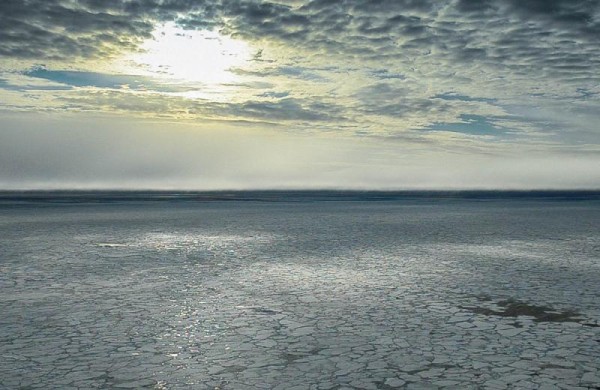Even when scientists develop an answer to why something happened, they still test the idea to make sure they’re right.
That’s what happened with the Great Arctic Cyclone of August 2012.
Last August a rare, massive cyclone formed in Siberia and swirled out over the Arctic Ocean for days. During its transit the sea ice disappeared faster than anyone had ever seen. (See the swirl here.)
By September Arctic sea ice was at an all time low. Some said the cyclone caused the lowest ice extent since record-keeping began. Did it? Or would the ice have melted anyway due to warm temperatures?
Scientists at the University of Washington’s Applied Physics Laboratory ran two computer simulations of last summer’s Arctic weather. One matched the actual weather. The other included everything except the cyclone.
The result showed that yes, “the effect is huge in the immediate aftermath of the cyclone, but after about two weeks the effect gets smaller. By September, most of the ice that melted would have melted with or without the cyclone,” said lead author Jinlun Zhang.
Why? Because of mixing.
Back in September most thought that the wind broke up the thin ice or pushed it into a warmer part of the ocean. Since then scientists have learned that the ocean underneath the ice is like a layered parfait. Just below thin ice is a layer of ice-cold fresh water. About 65 feet down is a layer of salty water warmed by the sun. The cyclone stirred the parfait. The ice was exposed to the warm water beneath and it melted.
The cyclone did cause the ice to melt 10 days sooner, but in the end it made less than 5% difference in the ice extent.
So yes, the sea ice melted because it was hot last year.
Click on the photo to read more about the study in Science Daily.
(photo courtesy University of Washington)

Hottest on record! So far.